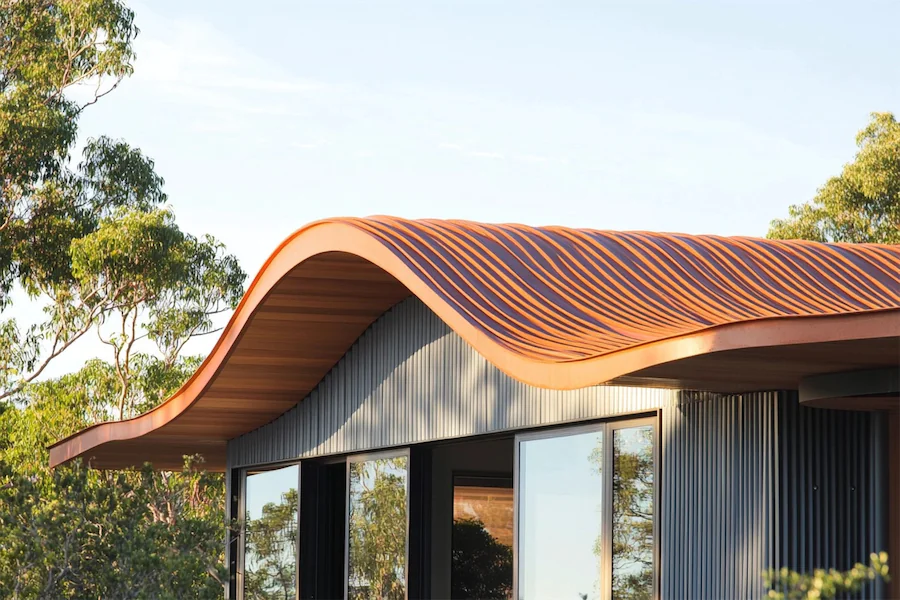Corrugated roofing is a type of roofing material characterized by its repetitive wavy or ridged pattern, which enhances its strength and durability. Commonly made from materials such as galvanized steel, aluminum, or PVC, corrugated roofing is widely used in both residential and commercial applications due to its cost-effectiveness and versatility.
History and Origins of Corrugated Roofing
The concept of corrugating metal to improve its strength dates back to the 19th century. Henry Robinson Palmer, an architect and engineer, was granted a patent in 1829 for “indented or corrugated metallic sheets.” This innovation proved to be light, strong, and corrosion-resistant, making it particularly suitable for prefabricated structures and rural buildings. Over time, corrugated metal became a staple in construction, especially in areas requiring durable and lightweight roofing solutions.
Key Features of Corrugated Roofing
- Durability: The corrugation process increases the material’s rigidity, allowing it to withstand harsh weather conditions and support significant loads without deformation.
- Lightweight: Corrugated roofing materials are relatively lightweight, reducing the structural load on buildings and simplifying the installation process.
- Cost-Effectiveness: Compared to other roofing options, corrugated roofing is often more affordable, making it an attractive choice for budget-conscious projects.
- Versatility: Available in various materials, finishes, and colors, corrugated roofing can complement a wide range of architectural styles and purposes.
Applications of Corrugated Roofing
Corrugated roofing is utilized in diverse settings, including:
- Residential Homes: Used for roofing, siding, or as decorative accents, providing a rustic or industrial aesthetic.
- Commercial Buildings: Applied in warehouses, factories, and retail spaces for its durability and ease of maintenance.
- Agricultural Structures: Ideal for barns, sheds, and storage facilities due to its resistance to the elements and low maintenance requirements.
- DIY Projects: Popular in smaller structures like carports, patios, and garden sheds because of its ease of installation.
Considerations When Choosing Corrugated Roofing
- Maintenance: While generally low-maintenance, it’s essential to inspect for potential issues such as rust or damage, especially in metal variants, and address them promptly to prolong the roof’s lifespan.
- Insulation: Metal corrugated roofs can conduct heat and cold, affecting indoor temperatures. Proper insulation is necessary to maintain energy efficiency and comfort.
- Noise: During heavy rain or hail, corrugated metal roofs can be noisier compared to other materials. Installing sound-deadening insulation can mitigate this issue.
- Aesthetic Compatibility: The distinctive appearance of corrugated roofing may not suit all architectural designs. It’s important to consider the overall style of the building to ensure visual harmony.
Conclusion
Corrugated roofing offers a blend of durability, affordability, and versatility, making it a viable option for various construction projects. By understanding its features, applications, and considerations, property owners can make informed decisions to meet their specific roofing needs.
